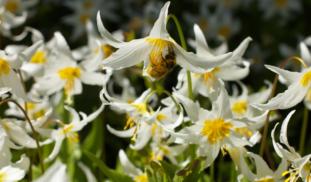Please wait...
About This Project
Climate cues the seasonal timing of key biological events (i.e. phenology), like flowering and seed production of high mountain wildflowers. But which climate variables matter most—snow or temperature? Does this differ by species? MeadoWatch is a citizen science program we launched in 2013 to address these questions. Volunteers collect reproductive phenology data for 16 wildflower species at Mt. Rainier National Park. We seek your support for the 2018 season.

Browse Other Projects on Experiment
Related Projects
Hippos as sentinels: Detecting pollution and pathogens
In western Uganda, hippos move between land and the Kazinga Channel, making them ideal sentinels of ecosystem...
Documenting unique plant and insect species within Siskiyou County's biodiverse landscape
The biodiversity in Siskiyou County is inadequately documented because of prior inaccessibility. We seek...
The Ridgeline Project: Exploring the last strongholds of Costa Rica's wild cats
The Ridgeline Project, led by The Wild Cat Imaging Project and Las Oncas, studies six threatened wild cat...





